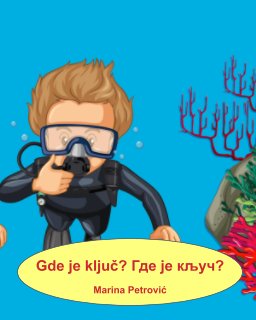Youtube is a great source of unique and authentic materials for learning Serbian, which I have been sharing with you under "listening comprehension" tag. One of the best and most comprehensible TV series for learning the Serbian language are surely ancient "Neven", as well as "Poletarac", directed by Timothy Byford and featuring the most prominent actors, actresses and sportsmen from ex-Yugoslavia in the early eighties.
Watch the first part of "Poletarac" and you'll see why it can come in handy when learning Serbian:
1. Part one about swimming (plivanje) and knowing (znanje) from the beginning to minute 3:00
Watch the first part of "Poletarac" and you'll see why it can come in handy when learning Serbian:
1. Part one about swimming (plivanje) and knowing (znanje) from the beginning to minute 3:00
- plivati = to swim
- znati = to know, can (I can swim = Znam da plivam)
- ko zna da pliva = who knows to / can swim ?
- osim = except
- žaba = frog
- imati = to have
- da li žaba ima zube ? = does a frog have teeth ?
- ne znam = I don't know
2. Part two about telling the time (koliko je sati) and numbers (from 3:00-4:00)
- koliko je sati ? = what's the time ?
- sada je tačno jedan sat = it's one o'clock sharp
- jedan i dva SU tri = one and two are three
- ovo je jedna žaba = this is a frog
- ovo su dve žabe = these are two frogs
- lopta je okrugla = the ball is round
- Zemlja je okrugla = the Earth is round
3. Part three about APPLES (from 5:30)
- jabuka = an apple
- koliko imate jabuka = how many apples do you have ?
- imam tri jabuke = I have three apples
- ljuštiti = to peal
4. Part four about UP and DOWN (from 6.30)
- sad = now
- gore = up
- dole = down
- sad sam dole = now I'm down
- sad sam gore = now I'm up
- visoko = high
- nisko = low
5: Part five with the short answers (from 8:00)
- Da li imam zube = Do I have teeth ?
- Imam = I do
- imati = to have
- Da li sam zelen kao žaba ? = Am I green like a frog ?
- Nisam = I'm not
- skakati = to jump
- Da li skačem kao žaba ? = Do I jump like a frog ?
6: Part six - thanking and greetings
- hvala = thank you
- doviđenja = goodbye
- hvala Vam najlepše = many thanks
- drago mi je = I'm glad
7. Part seven (from 10:50) about bees and numbers
- ovo je ... = this is...
- pčela = bee
- hive = košnica
- fabrika = factory
- roj (pčela) = swarm
- med = honey
- ko bude jeo..., biće ... = the one who eats..., he'll be...

.png)














